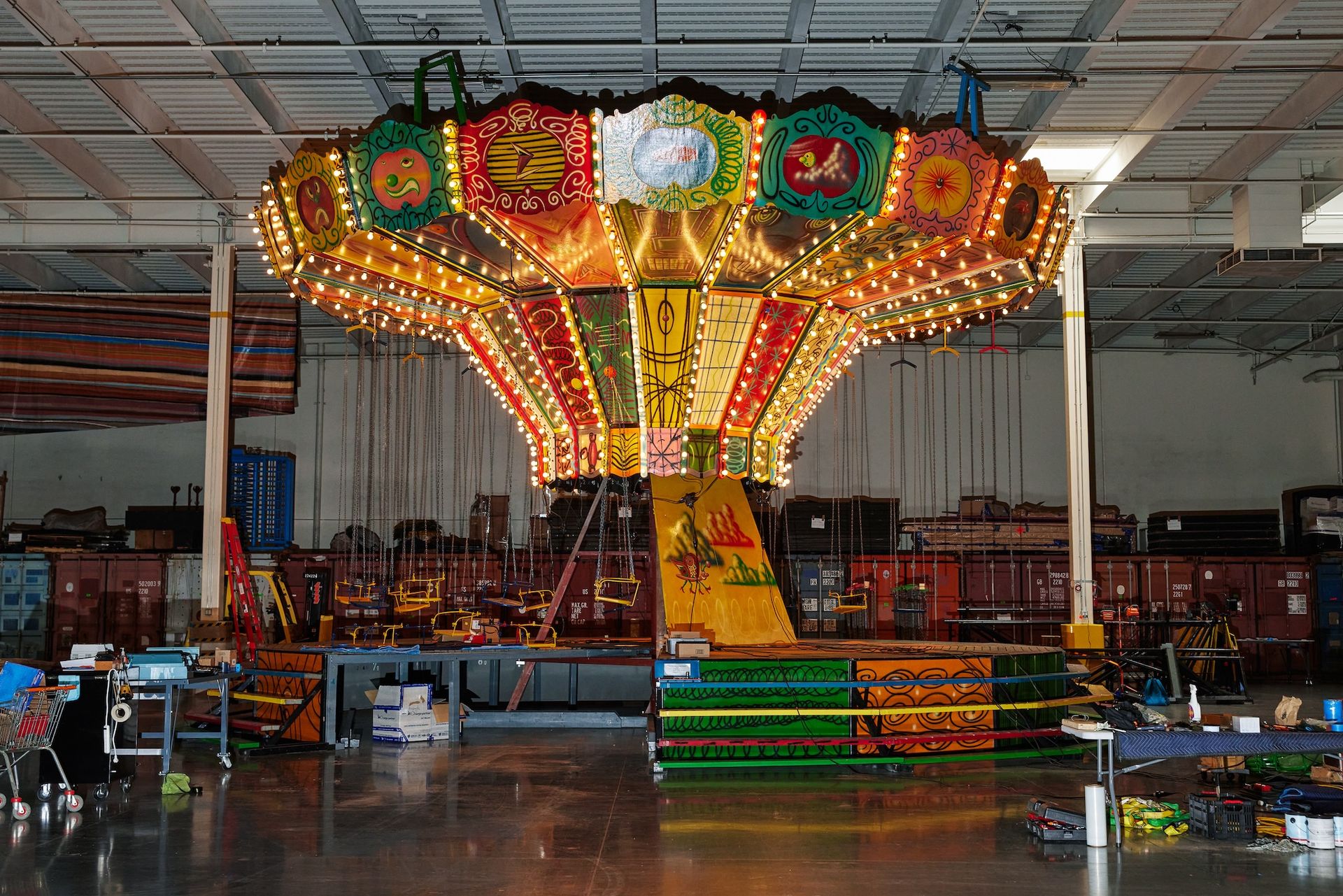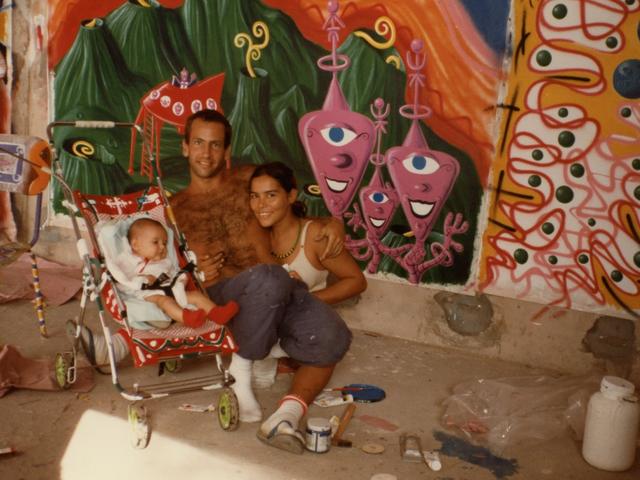This month, a landmark if quirky project billed as “the world's first art amusement park” will be resurrected on the edge of downtown Los Angeles. In the summer of 1987, Luna Luna was built in a park in Hamburg, Germany, featuring an astonishing array of celebrated artists creating the signage, rides and pavilions—among them Jean-Michel Basquiat, Sonia Delaunay, Keith Haring, David Hockney, Roy Lichtenstein, Joseph Beuys and Rebecca Horn. It drew more than 240,000 visitors and garnered international press coverage. Then it lost its funding, folded and disappeared.
Through a number of twists and turns, the amusement park will now return as Luna Luna: Forgotten Fantasy, with a facelift and some added attractions. Unfortunately, visitors will not be able to ride most of the historic and fragile rides.

Aerial view of Luna Luna in Moorweide park, Hamburg, Germany, 1987 Photo: © Sabina Sarnitz, courtesy Luna Luna
“Luna Luna is so remarkable within art history, not just because of how well-known the artists were,” says Lumi Tan, the new amusement park's curatorial director, “but what the project represented: the breaking down of barriers between art movements, disciplines and generations; a truly successful ability to make the avant-garde accessible and the prescient desire to immerse an audience completely in a sensorial experience.” (With current appetites for immersive experiences, updating such a project must have proved an attractive commercial endeavour as well.)
The original Luna Luna was the brainchild of André Heller, an Austrian artist and actor turned impresario, who managed to persuade around 30 artists to sign on to a popular form of public entertainment, the amusement park. Among them were several musicians, such as Miles Davis and Philip Glass, who granted use of their works. To underwrite the project, Heller obtained about $350,000 from the German magazine Neue Revue, and travelled to find and court his artists. Luckily, he had a keen eye for those whose work would withstand the test of time. There were artists who were already established, like Salvador Dalí, and others whose stars were on the rise—Kenny Scharf, for example.

In-progress assembly of Kenny Scharf’s painted chair-swing ride at the Luna Luna warehouse, Los Angeles Photo: Courtesy Luna Luna
As Heller himself admits in a book that accompanied his project, it was a miracle he got the artists to participate—and for less money than would be expected. Scharf tells The Art Newspaper that the $10,000 fee was low, but “we were told it would travel to all these other places, and end up in New York by the United Nations”. While some artists sent in designs that were executed in absentia, Scharf made his way to VIenna, where he created his work. “I spent a month in a cold warehouse,” says Scharf, who made a series of geometric characters that lined a walkway as well as a chair-swing ride festooned with colourful panels and other whimsical decorations.
Eventually, Luna Luna was set up in a park in Hamburg, and Scharf recalls how exciting it was to see, though it rained throughout the opening—“a big muddy mess", he says. More unfortunate still was that Heller lost his funding despite high attendance figures, and at the end of the summer, everything was packed up and put into storage. In 2007, the crates ended up in a warehouse in rural Texas. In early 2022, DreamCrew, an entertainment business founded by the Canadian rap superstar Drake and producer Adel "Future" Nur, purchased the whole kit and kaboodle, and moved it to Los Angeles, where it has been undergoing restoration. (The estimated cost of the project thus far, including purchase price, is $100m.)

Performers in front of Sonia Delaunay’s entrance archway and Luna Luna sign, Hamburg, Germany, 1987 Photo: © Sabina Sarnitz, courtesy Luna Luna
Luna Luna: Forgotten Fantasy will be located indoors—inside two warehouses in a 60,000 sq. ft complex. About half of the 30 or so original installations will be on display, including Hockney's enchanted forest, Dalí’s geodesic dome mirrored on the inside, Scharf's chair-swing ride and Delaunay's painterly abstractions on the entry archway. (As Heller explains in his book, he had met with and gotten Delaunay's approval before she died in 1979.) Most of these are for viewing only, due to their fragility. Not to worry, however—there will be new rides which one can take for a spin. There will also be performers circulating throughout, and of course, food and souvenirs for purchase.
"Projects that I've done, that artists do—you put everything into it," Scharf says. "You're devastated when they die. And then, if you stay alive long enough, sometimes they might not be dead after all."



